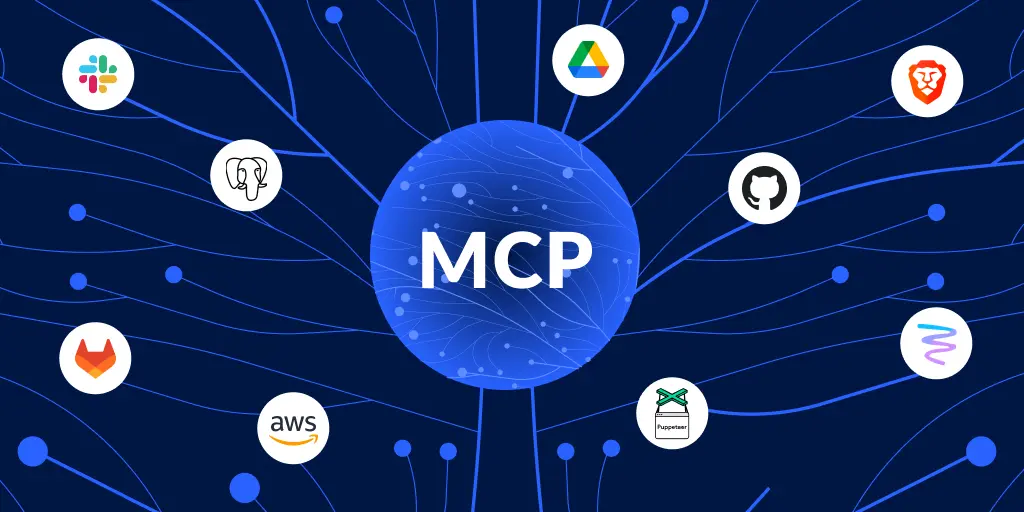MCP, the Tech That Turns AIs Into Your Personal Agents

Every day, we spend a lot of time interacting with LLM clients like ChatGPT, Gemini, Grok, or Claude. We ask them any question, have them write what we don’t want to write, and summarize what we don’t want to read, among other very creative things. But after the gift that Anthropic gave us in late 2024, those creative actions we ask of LLMs leveled up. 🚀
The gift I’m talking about is the MCP (Model Context Protocol), a standard proposed by Anthropic that, to this day, has been widely accepted by the entire tech community. Its goal is simple yet revolutionary: to be the link between LLMs and various external tools. This allows the models not only to answer things based on their knowledge but also to implement much more complex actions, like searching for real-time data on the internet, connecting to a database, or performing actions like sending emails—all by giving them a simple command using natural language.
This is insane. Not just because of the technological leap it represents, but because of its immense potential. Just thinking about the kind of applications that could be built with it gets me excited.
🤔 But, How Does This Magic Work?
To understand it better, think of a traditional LLM as an incredibly smart brain, but one that’s stuck in a jar. It has access to a massive amount of information (what it was trained on), but it has no arms or legs to interact with the outside world.
MCP acts as the nervous system for that brain. When you give it a command, the process goes something like this:
- You give the command: You say something like, “Check my calendar and schedule a meeting with Ana for Friday afternoon.”
- The LLM interprets and chooses the tool: The model understands that to fulfill your request, just “knowing” things isn’t enough. It needs to access an external tool (your calendar’s API) and use a specific function (
check_availabilityand thencreate_event). - MCP springs into action: The LLM, through MCP, formats a request that the calendar tool can understand. It’s like a universal translator that allows the brain (LLM) and the limbs (the tools) to communicate seamlessly.
- The tool does its thing: The calendar API receives the request, finds a free slot, and schedules the meeting. Then, it returns a confirmation to the LLM, like “OK, meeting scheduled for Friday at 3 PM.”
- The LLM replies to you: Finally, the model processes that confirmation and responds to you in a natural, friendly way: “All set! I’ve scheduled the meeting with Ana for this Friday at 3 PM. Do you need me to send her any documents beforehand?”
MCP transforms LLMs from being oracles of information into true agents of action.
✨ A Universe of Possibilities
Imagine an assistant that doesn’t just tell you how to write an email, but also finds the information you need, drafts the email, finds the correct recipient in your contacts, and sends it for you. Or a system that, when you ask, “How are today’s sales?” connects to your company’s database, analyzes the records, and generates an executive summary for you instantly.
But let’s go even further:
- For the traveler ✈️: “Find me the cheapest flight to Madrid for the first week of December, book it, and add it to my calendar.” The system would search airlines, make the purchase, and update your schedule.
- For the developer 💻: “Monitor our server’s performance, and if the CPU usage exceeds 90% for more than 5 minutes, open a high-priority ticket in Jira with the relevant logs.”
- For the smart home 🏠: “If the rain sensor is activated and a window is open, close it and send a notification to my phone.”
- For the content creator 🤳: “Take the last video I posted on YouTube, transcribe the audio, create a blog post based on the transcription, generate 5 tweets with the key points, and schedule them to be posted throughout the day.”
The Importance of a Standard
You might be wondering, why all the fuss about a “protocol”? The key is in the word standard. Before MCP, every company was creating its own proprietary ways to connect its models to tools. This would create a fragmented ecosystem, where a tool designed for one model wouldn’t work with another.
MCP aims to be the “USB” of AIs. A universal connector that ensures any tool compliant with the standard can communicate with any LLM that also supports it. This accelerates innovation, reduces development costs, and gives us, the end-users, more freedom and options.
We are just seeing the tip of the iceberg of what can be built. The era of simply “chatting” with an AI is giving way to an era of active collaboration, where LLMs become proactive partners that help us execute tasks in the digital and physical worlds. The future is already here!